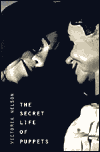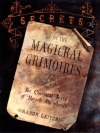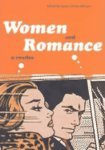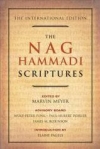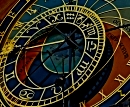
| ©Copyright 2002-2008 [Shawn Nacol] All rights reserved |
Here are some books to peruse if you are intrigued by the world of Nether Regions
Dæmonology & Magick
Unlocked Books: Manuscripts of Learned Magic in the Medieval Libraries of Central Europe During the Middle Ages, the Western world translated the incredible Arabic scientific corpus and imported it into Western culture: Arabic philosophy, optics, and physics, as well as alchemy, astrology, and talismanic magic. The line between the scientific and the magical was blurred. According to popular lore, magicians of the Middle Ages were trained in the art of magic in "magician schools" located in various metropolitan areas, such as Naples, Athens, and Toledo. It was common knowledge that magic was learned and that cities had schools designed to teach the dark arts. The Spanish city of Toledo, for example, was so renowned for its magic training schools that "the art of Toledo" was synonymous with "the art of magic." Until Benedek Lang's work on Unlocked Books, little had been known about the place of magic outside these major cities. A principal aim of Unlocked Books is to situate the role of central Europe as a center for the study of magic. Lang helps chart for us how the thinkers of that day clerics, courtiers, and university masters included in their libraries not only scientific and religious treatises but also texts related to the field of learned magic. These texts were all enlisted to solve life's questions, whether they related to the outcome of an illness or the meaning of lines on one's palm. Texts summoned angels or transmitted the recipe for a magic potion. Lang gathers magical texts that could have been used by practitioners in late fifteenth-century central Europe. | |
Grimoires: A History of Magic Books No books have been more feared than grimoires, and no books have been more valued and revered. In Grimoires: A History of Magic Books, Owen Davies illuminates the many fascinating forms these recondite books have taken and exactly what these books held. At their most benign, these repositories of forbidden knowledge revealed how to make powerful talismans and protective amulets, and provided charms and conjurations for healing illness, finding love, and warding off evil. But other books promised the power to control innocent victims, even to call up the devil. Davies traces the history of this remarkably resilient and adaptable genre, from the ancient Middle East to modern America, offering a new perspective on the fundamental developments of western civilization over the past two thousand years. Grimoires shows the influence magic and magical writing has had on the cultures of the world, richly demonstrating the role they have played in the spread of Christianity, the growth of literacy, and the influence of western traditions from colonial times to the present. Through his enlightening and extraordinary account, we see how these secret books link Chicago to ancient Egypt, Germany to Jamaica, and Norway to Bolivia, and grasp how the beliefs of Alpine farmers became part of the Rastafarian movement, how a Swede became the most powerful wizard in early America, and how a poor laborer from Ohio became a notorious villain in his own country and a mythical spirit in the Caribbean. Despite religious condemnation and laws barring their use, the grimoire has survived to the present day, and not just in Harry Potter films and Broadway's Wicked. Here is a lively and informative history of a genre that holds a powerful fascination for countless readers of the occult. . | |
by Victoria Nelson Beautiful, baroque, and wildly syncretistic! This unusual work examines the roles of art and religion in relationship to each other from both historical and contemporary perspectives. Until the Renaissance, art was visibly influenced by religion. Yet in modern eras, states Nelson (On Writer's Block), the roles have been reversed, with art, entertainment, and literature responding to a universal human need for religious meaning and even influencing New Age and other spiritual approaches. Nelson studies many expansive facets of such provocative topics as the grotto as representative of the underworld; puppets and dolls in art and literature and their deeper contexts (e.g., as reflected in the writings of Rainer Maria Rilke and E.T.A. Hoffmann, among others); the macabre works of H.P. Lovecraft and Edgar Allan Poe and their subliminal reach into repressed religious impulses; and the symbolism of expressionistic film genres and sf. She draws upon varied examples and sets her findings against frameworks of scientific, artistic, and philosophical thought.
| |
Daemonic Reality: A Field Guide to the Otherworld by Patrick Harpur Mindblowing! This book offers a uniquely holistic and metaphysical perspective concerning otherworldly events such as UFOs, fairies, phantom animals, visions of the Virgin Mary, alien abductions, and more. Presenting the theory of Daimonic Reality, which perceives certain creatures and things to be not literally real (incapable of being unequivocally proven to exist) but rather Daemonically real (always being expressed in one form or another no matter how heavily skeptical opinions proclaim otherwise), Daimonic Reality is a thoughtful and fascinatingly unique look at the realm of the bizarre. Daimonic Reality is a "must read" title for dedicated students of religion, mythology, metaphysics, and paranormal studies. ... The Philosopher's Secret Fire: A History of the Imagination by Patrick Harpur Even more magical than his first book... This fascinating book provides a historical look at the expressions of human imagination and how ideas of reality have been shaped over time. Harpur examines a wide range of imaginary creatures and concepts, including those found in folklore and mythology, religion and philosophy, poetry and drama, spiritualism and psychology. He thoughtfully presents traditions from around the world and illustrates the cultural similarities and symbolic role each plays in society and for the individual. The author demonstrates that in modern times beliefs have moved away from explanations based on the supernatural toward an overreliance on scientific interpretations. However, he also shows that even scientific methods and models rely on the imagination and that new concepts of reality continue to be created. The book is scholarly in tone, presenting a wealth of literary allusions and erudite analysis. | |
The Complete Magician's Tables by Stephen Skinner An invaluable resource! These more than 777 tables are the most complete set of tabular correspondences covering magic, astrology, divination, Tarot, I Ching, Kabbalah, Gematria, isopsephy,angels, demons, pagan pantheons, religious and mystical correspondences currently in print. They are more than four times larger and more wide ranging and detailed than Crowley’s Liber 777. The source of the data in these tables ranges from unpublished manuscript mediaeval grimoires, Kabbalistic works, Peter de Abano, Abbott Trithemius, Albertus Magnus, Henry Cornelius Agrippa, Dr John Dee, Dr Thomas Rudd, Tycho Brahe, S L MacGregor Mathers, (and the editors of Mather's work, Aleister Crowley and Israel Regardie), to the most modern theories of prime numbers and atomic weights. The sources include many key grimoires such the Sworn Book, Liber Juratus, the Lemegeton (Goetia, Theurgia-Goetia, Almadel, Pauline Art), Abramelin, and in the 20th century the grimoire of Franz Bardon. All this material has been grouped and presented in a consistent and logical way covering the whole Western Mystery tradition and some relevant parts of the Eastern tradition. | |
If you like Skinner's approach you should check out his coauthored books on evocation Keys to the Gateways of Magic: Summoning the Solomonic Archangels & Demon Princes by Stephen Skinner & David Rankine This volume draws on a wide range of manuscript sources to make available some of the most important grimoire material of the seventeenth century. It includes the complete unabridged version with variants of The Nine Great Keys, a vital early 17th century manuscript detailing the evocation of the Archangels and Orders of Angels. The practical techniques of summoning the Archangels, details of the hierarchies of spiritual beings, and how the Enochian system fits in with the Angelic and Demonic hierarchies are all covered, as well as the theology and philosophy associated with Angelic magic, giving the context that the pioneers of Angel magic were working within. Additionally the evocation of the four Demon Princes and their role within the system of magic which can now be seen to cover all spiritual creatures from Archangels to Demons to Olympic Spirits and Elementals is also presented in detail with rare manuscript material being made available for the first time. Amongst the rare material is a previously unknown and beautifully illustrated volume dealing exclusively with the Demon Princes. | |
by Stephen Skinner & David Rankine The Goetia (Lemegeton) is perhaps the most famous grimoire after the Key of Solomon. This volume contains a transcription of a hitherto unpublished manuscript of the Lemegeton includes four whole grimoires: Liber Malorum Spituum seu Goetia Theurgia-Goetia Ars Paulina (Books 1 & 2) Ars Almadel This manuscript was owned by Dr. Thomas Rudd, a practicing scholar-magician of the early seventeenth century who knew Dr. John Dee. There are many editions of the Goetia, of which the most definitive is that of Joseph Peterson, but this volume shows how the Goetia was actually used by practicing magicians in the sixteenth and seventeenth centuries, before the knowledge of practical magic faded into obscurity. For example, to evoke the seventy-two demons of the Goetia, or the many other spirits listed here, requires more knowledge than is included in the grimoires themselves. It was well-known in times past that invocatio and ligatio, or binding, was a key part of evocation, but in the modern editions of the Goetia this key technique is expressed in just one word "Shemhamphorash," and its use is not explained. This volume explains how the 72 angels of the Shemhamphorash are used to bind the spirits, and the correct procedure for safely invoking them using dual seals with the necessary angel seal and Psalm. Also, for the first time, the exact form and use of the breastplate and Brass Vessel is explained. | |
Secrets of the Magickal Grimoires: The Classical Texts of Magick Deciphered by Aaron Leitch Legends of King Solomon, his work with Angels and his command of "unclean spirits" were popular in medieval Roman Catholic Europe. In time, this generated a "Solomonic" tradition among European mystics. These people were among the first to record aspects of their magickal traditions in book form- which we today refer to as "Grimoires". Included in this genre are such titles as The Key of Solomon the King, The Lemegeton or Lesser Key of Solomon, Agrippa's Three Books of Occult Philosophy, Barrett's The Magus, The Grand Grimoire and many others. Secrets of the Magickal Grimoires is an in-depth exploration of Solomonic mysticism- including large portions of all of the above titles (and more), with the foundational philosophy behind the grimoires laid out, along with explanations and tips for the modern reader who wishes to practice summoning. | |
Ceremonial Magic & the Practice of Evocation by Joseph C. Lisiewski, PhD. For centuries, the ceremonial evocation of spiritual beings has been Magic's darkest corner. Reputed to fulfill the Magician's material desires, evocation has been the topic of the most famous Grimoires. Ceremonial Magic lays bare the operation of the Heptameron of Peter de Aban. Its Magical Axioms, extensive Commentaries, copious notes, and personal instructions to the reader---all gained from Dr. Lisiewski's forty-years of study and practice in Ceremonial Magic. As one Amazon reviewer put it "the basic premise of Dr. Lisiewski is that the various magickal operations as prescribed by the old grimoires were indeed meant to be followed to the letter. To him, and to those who agree with him, not using the proper tools, drawing the proper circles and saying the proper words as prescribed would be like, say, baking a cake and using mud instead of flour, as it was easier to get access to. He's a purist, and, to his considerable credit, seems to find it incredulous that grimoires (most of which were essentially student notebooks, copied word for word much as notes from a physics lecture) would include deliberate "blinds", especially of such complicated varieties." |
Genre Criticism
A Natural History of the Romance Novel The romance novel has the strange distinction of being the most popular but least respected of literary genres. While it remains consistently dominant in bookstores and on best-seller lists, it is also widely dismissed by the critical community. Scholars have alleged that romance novels help create subservient readers, who are largely women, by confining heroines to stories that ignore issues other than love and marriage. Pamela Regis argues that such critical studies fail to take into consideration the personal choice of readers, offer any true definition of the romance novel, or discuss the nature and scope of the genre. Presenting the counterclaim that the romance novel does not enslave women but, on the contrary, is about celebrating freedom and joy, Regis offers a definition that provides critics with an expanded vocabulary for discussing a genre that is both classic and contemporary, sexy and entertaining. Taking the stance that the popular romance novel is a work of literature with a brilliant pedigree, Regis asserts that it is also a very old, stable form. She traces the literary history of the romance novel from canonical works such as Richardson's Pamela through Austen's Pride and Prejudice, Brontë's Jane Eyre, and E. M. Hull's The Sheik, and then turns to more contemporary works such as the novels of Georgette Heyer, Mary Stewart, Janet Dailey, Jayne Ann Krentz, and Nora Roberts. | |
Dangerous Men and Adventurous Women: Romance Writers on the Appeal of the Romance by Jaye Ann Krentz In 22 essays, romance novelists address why romances are popular. These authors are convincing when they simply write what they think, as when Sandra Brown flatly asserts that romances "are fun--fun to write, fun to read, fun to dissect and discuss." Some more complex arguments, which invite closer scrutiny of their logic, don't always fare as well. For example, Linda Barlow and Jayne Ann Krentz maintain that "outsiders tend to be unable to interpret" the language, images and symbols that recur, but only a few pages later they claim that such "codes" are "universally recognized by women." When disjunctions arise from the arguments of different authors, however, they can be intriguing: Elizabeth Lowell says of romance heroes that "at core, they are decent"; Anne Stuart maintains that her heroes are men "whose sense of honor and decency is almost nonexistent." There are hints of how interesting these authors could have been, had they not been tied to the book's fairly defensive theme. Notable are Kathleen Gilles Seidel's comments on the nature of romance (prompted by her judging a Valentine's Day essay contest) and her suggestion that information theory might offer useful insights on repetitive reading of romances. | |
edited by Anne K. Kaler & Rosemary E. Johnson-Kurek The latest in the steadily growing body of scholarly works on the romance fiction genre, this interesting and potentially important collection of 11 essays by nine academics, several of whom are also published romance writers, takes a closer look at the various literary conventions within the genre. The articles, grouped into three sections, "Archetypes and Stereotypes," "Conventions of Time and Place," and "Language and Love," address such diverse topics as the "good-provider hero," witchcraft, and the Fabio phenemenon. The style and quality of the articles vary widely, but despite the occasional marginal offering, most are useful and well done?and the few insightful gems that are both readable and scholarly are well worth the price of the book. | |
Seduction Seduction, in French thinker Baudrillard's apocalyptic discourse, is a power of attraction and fascination capable of subverting mechanical, orgasm-centered sexuality and reality in general. Two chief obstacles to unleashing the potentially liberating forces of seduction are the women's movement and psychoanalysis, charges the author of America and Forget Foucault. While recognizing that seduction has a negative side--turning the seduced person away from his/her true thoughts and impulses--Baudrillard is intrigued by the seductive processes at work in the vertigo induced by games, in magic and the lottery, in the transvestite's "total gestural, sensual and ritual" behavior. He decodes pornography as "an orgy of realism," a hyperreality of signs. In his analysis, seduction has itself been corrupted in a world of manufactured desires and ready-made satisfactions. With seductive irony, Baudrillard storms the fragile phallic fortress of patriarchy in this heady, sometimes obscure meditation. | |
Loving with a Vengeance Upon its first publication, Loving with a Vengeance was a groundbreaking study of women readers and their relationship to mass-market romance fiction. Feminist scholar and cultural critic Tania Modleski has revisited her widely read book, bringing to this new edition a review of the issues that have, in the intervening years, shaped and reshaped questions of women's reading. With her trademark acuity and understanding of the power both of the mass-produced object--film, television, or popular literature--and the complex workings of reading and reception, she offers here a framework for thinking about one of popular culture's central issues.. | |
The Name of the Rose, including the Postscript to the Name of the Rose by Umberto Eco Spectacular!! Eco's "Postscript" is worth the price of the book in itself... published finally with the book that inspired it. But the novel, an event when it was first published, is phenomenal, totally deserving of its success. Smarty-pants fiction with a lingering glow. | |
Women and Romance: A Reader Women and Romance: A Reader seeks to address in bringing together a collection of texts specifically focused on the subject of women's conflicted but powerful urge to experience the pleasure and endure the pain of romantic love. The first anthology of its kind, Women and Romance includes historical as well as contemporary selections, personal letters as well as theoretical essays, and social science perspectives as well as literary criticism of the novel and the popular mass-market romance. Wiesser lays out in systematic order for the first time the varying viewpoints and conflicted history of feminist views on romance, from Mary Wollstonecraft and Emma Goldman to Germaine Greer and Lillian Faderman. Introductions to each entry and section clarify the emerging themes of each era and of separate disciplines, while representing the views of traditionalists and anti-romance second-wave feminists alike. | |
The Romance Revolution: Erotic Novels for Women and the Quest for a New Sexual Identity This book looks at the political and zsexual implications underlying the explosion of the romance genre in the past 3 decades. "Published in slowly increasing numbers throughout the 1950s and 1960s, paperback romance novels blossomed during the 1970s into a mass entertainment medium that by 1985 accounted for about 40 percent of all mass market paperback books published in the United States, with twenty million readers and close to a half- billion dollars in annual sales." | |
by Jack Morgan Really interesting revisiting of the dynamic of horror in literature as an expression of the death-impulse. Argues that the split in literature isn't comedy/drama, but rather comedy/horror. Eros/Thanatos and all that, natch. Very cool reading. Caitlin Kiernan: "An eminently readable and insightful book . . . a must for readers interested in the history and deeper significance of the gothic." | |
The Art of Darkness: a Poetics of Gothic by Anne Williams From Book News, Inc.: "The author proposes that the Gothic tradition in literature is a poetic tradition with intimate links to the Romantic, with subjects in both a male and a female genre. She observes that the structure informing the Gothic myth is the patriarchal family, and explains how the tradition as a whole expresses the dangerous power of the female." | |
Gnosticism
Secret Cinema: Gnostic Vision in Film by Eric G. Wilson In the last twenty years or so, numerous mainstream movies have drawn from the ideas and images of ancient thought to address the collapse of appearance and reality. These films have consistently featured the Gnostic currents that emerged from Plato: not only Gnosticism itself but also Cabbala and alchemy. Despite important differences, these traditions have provided filmmakers with ready-made ruminations on the relationship between surface and depth as well as with engaging plot lines and striking scenes. In films like "The Matrix" (1999) and "The Truman Show" (1998), Gnostic myths have offered speculations on the real as well as conspiracy theories. The Cabbalistic motif of golem-making has provided such movies as "A.I." (2001) and "Blade Runner" (1982) with mediations on the human and with parables of machines yearning for life. Pictures like "Dead Man" (1996) and "Altered States" (1980) have drawn on alchemical symbols to explore the possibilities of transmutation and to feature stories of the dead rising to life. Recent commercial Gnostic films are meditations on the conundrums of the post-modern age and the timeless soul. These pictures constitute archetypal sites for sacred contemplation. They create spaces akin to the caves of Eleusis or Lascaux, chambers where habits are annihilated and the ego is shattered. Maybe this spiritual attraction is the secret reason behind the recent abundance of Gnostic films. If so, then the dream factory is betraying its purpose. It is negating its deceptions and sales in the name of a bewildering reality that cannot be found. "Secret Cinema" explores these possibilities through engaging in three related activities. One, the book establishes the theoretical foundations and implications of the genre of Gnostic cinema. It develops these theoretical elements in the contexts of Gnosticism and the esoteric traditions emerging from it, Cabbala and alchemy. Two, in undertaking this work, Wilson considers several collateral issues. The book discusses the functions of genre, the relationships between cinema and psychology, the connections between the moving image and sacred power, the role of the cinematographic apparatus, and the romance of film. Three, the book is a broad meditation on the seductions of cinema. It is attuned to material attractions of the movies, those gorgeous lights and lurid shadows, but also the film's spiritual invitations, the gaps between the pictures, the empty spaces at the heart of life. | |
Gnosis: The Nature and History of Gnosticism (Paperback) Solid overview of an extremely complex theological subject. No fluffy New Age crap here either... strong scholarship and reliance on primary texts. 'Kurt Rudolph is the world's leading expert on the only branch of Gnosticism that has survived down to the present. He also is the scholar who has the most authoritative overview of the whole Gnostic phenomenon....(His) popular survey of Gnosticism...does for the next generation what Hans Jonas's Gnostic Religion did for the generation just past: present a readable and appealing introduction to what otherwise might seem an inaccessible religion of late antiquity.' --James M. Robinson, General Editor, The Nag Hammadi Library in English
| |
The Nag Hammadi Scriptures The Nag Hammadi Scriptures is the most complete and up-to-date English-language edition of these sacred texts from Egypt. It is full of treatises, testimonies, and secret books that had been lost for centuries. In addition to gospels purportedly by the apostles Thomas and Philip, and the revelations of James, Peter, and Paul, this collection also includes the Gospel of Mary and the controversial Gospel of Judas. The documents have been newly translated by a team of prominent international scholars. This volume also features introductory essays and extensive notes to help readers understand the context and significance of these texts that have revolutionized the study of early Christianity and ancient religious thought. |
|



